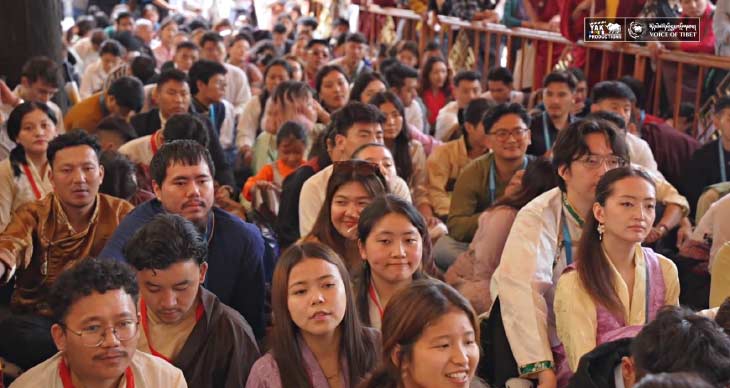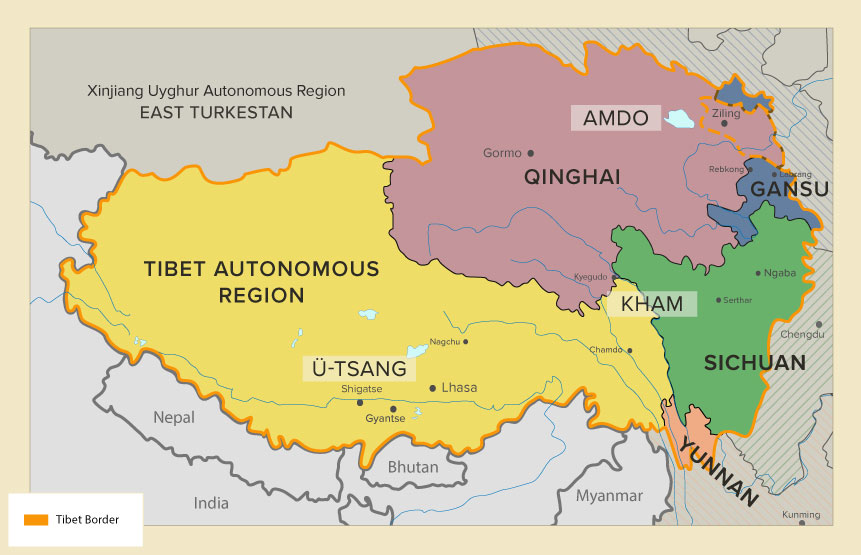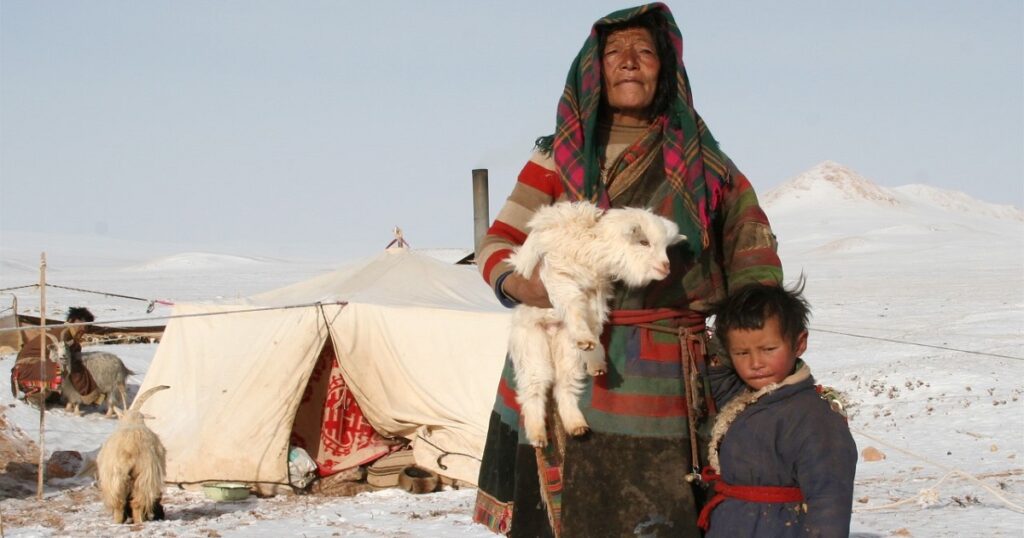From July 1st through the 6th, I had the privilege of participating in the second International Tibet Youth Forum and attending His Holiness the Dalai Lama’s 89th birthday in Dharamshala.
I witnessed firsthand dignitaries, monastics, and citizens gather to recognize the Dalai Lama’s decades of dedication to compassion, preservation of the Tibetan people’s ancient civilization, and democratic freedom.
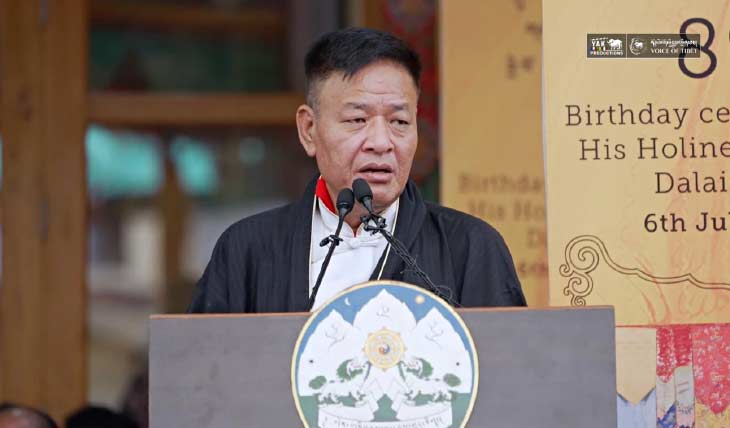
As we know, the celebration echoed around the world, befitting the Dalai Lama’s global leadership and universal message of kindness.
Despite his absence as he is in the United States, recovering from knee surgery, the crowd joined hands in spirited acknowledgment of the Dalai Lama’s service, not just to the Tibetan people’s struggle to peaceably end the People’s Republic of China’s occupation, but also to the principles of the oneness of humanity, regardless of nationality, origin, or belief.
Woven together with His Holiness’ contributions as an emissary of justice, much emphasis was placed on the necessity to find a concrete path toward a stable, mutually beneficial agreement between Tibetan leadership and Chinese authorities.
Particularly noteworthy to me was the Tibetan community’s rallying around the recently passed Resolve Tibet Act by the U.S Congress, which expresses the Tibetan people’s aspiration of self-determination. The law also takes direct aim at the PRC’s slanderous attacks on His Holiness and constant disinformation campaigns that attempt to substitute lies for historical fact in service to its agenda of domination.
Proud to have contributed my part on behalf of the International Campaign for Tibet in partnership with the Office of Tibet and many other Tibet supporters from around the world to advance the bill, it was incredibly moving to experience the significance the law is to the Tibetan people—pragmatically and as a beacon of hope to those within Tibet trapped by the fear of constant surveillance, arrest, and torture.
Befittingly, however, His Holiness’ birthday was filled with energetic joy. In defiance of Beijing’s agenda to erase Tibet’s ancient civilization, performers ranging from older representatives to the very young gifted the crowd with traditional, dance and music.
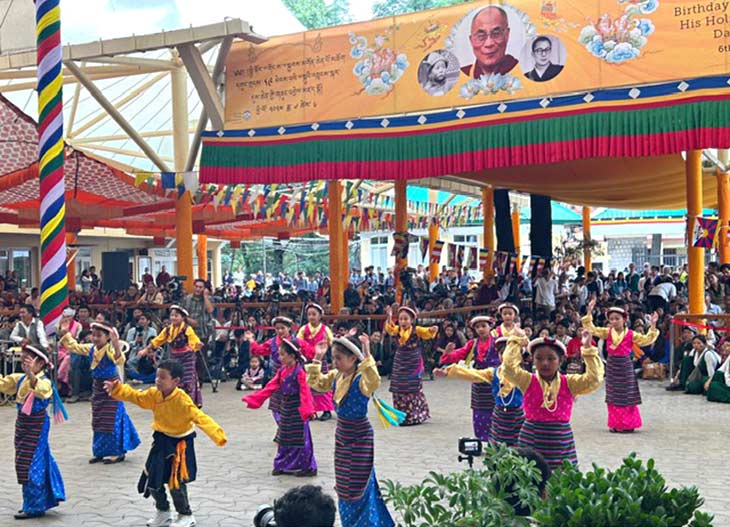
Dancers swirled in complex, synchronized movement, voices raised in Tibet’s distinctively pitched signing, and musicians artfully manipulated traditional percussion and string instruments
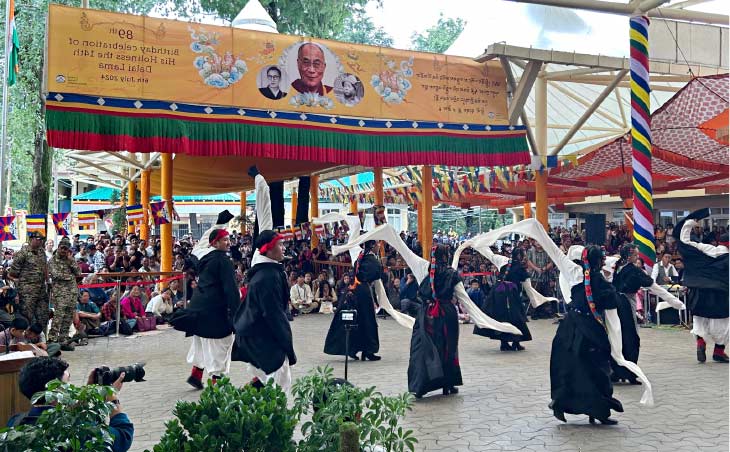
As mentioned above, I also had the privilege of participating in the youth forum that preceded the birthday celebration. Hosted by the Central Tibetan Administration, the forum brought together young Tibetans from 13 countries for discussion and advocacy trainings.
Speakers included, the Venerable Geshe Lhadkor, Director of Tibetan Works and Archives, Dr. Tenzin Dorjee, Strategist and Senior Researcher, Tibet Action Institute, Bhutilla Karpoche, Member of Provincial Parliament, Canada, Namgyal Gangshontsang, Mayor of Oetwil am See, Switzerland, and many others.
Once again, we were gifted by several performances conveying the distinctive nature of Tibetan artistry.

The gorgeously embroidered costume and elaborate masks were especially indicative of the vibrancy and depth of Tibet’s customs These displays provided another boost of dedication to transferring the beauty from this to generations to come.

The panels themselves offered introduction to a range of core advocacy methods, including leadership training, non-violent activism, interacting with elected officials, campaign design, movement building, and more.
It was easy to tell from the young students’ active engagement, repeated show of dedication to building their own advocacy skills, and interest in organizing their communities, the fire that continues to ignite the younger generation’s passion for change.
When asked about his participation as a speaker, Namgyal Gangshontsang, whom I met at the forum, replied “It was an honor to be part of the International Tibet Youth Forum 2024 with so many motivated conference participants.” adding “the speeches, discussions… [and] training sessions were fabulous and extremely motivating at the same time…in my view, it was a complete success.”
I could not agree more. It was incredibly satisfying to help illustrate strategies to interact with policy makers and to conduct advocacy training to provide tools to advance the Tibetan cause in the participants respective political systems.
I firmly believe strengthening the next generation’s efforts to effect change is crucial. There can be no better advocates than younger Tibetans to fulfill the end of China’s oppression. Afterall, the future belongs to them.
